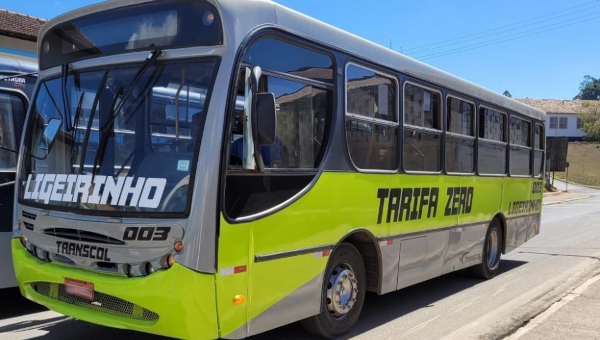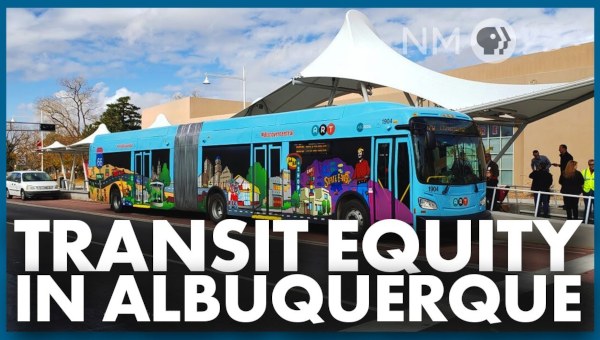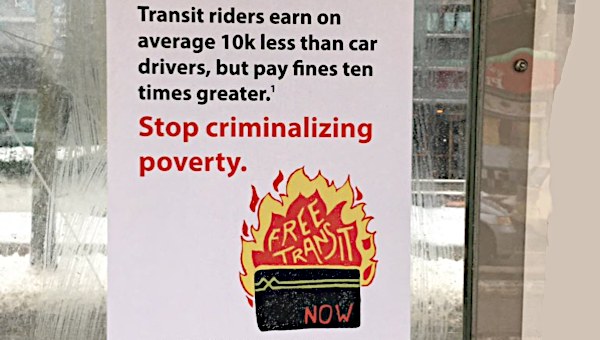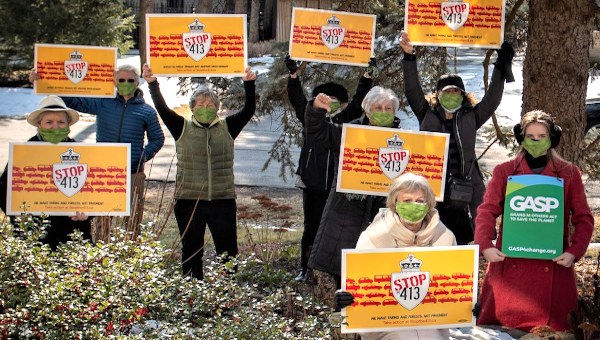A Green New Deal for Public Transport
As the US confronts the twin crises of climate and the coronavirus, each disproportionately harming Black and brown Americans, it’s time for a reckoning over our failed federal transportation policies. To reduce greenhouse gas emissions in the necessary time frame outlined by scientists, we must make public transit a viable option for the majority of Americans. This will provide the greatest benefits to Black and brown riders, who have shouldered the burden of caring for our society throughout the pandemic, while continuing to take transit in large numbers.
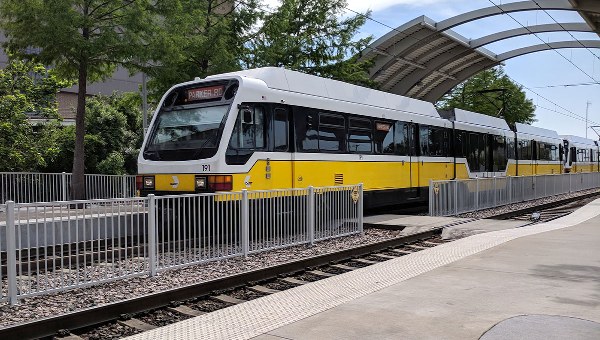
Transit agencies’ budgets across the country have been decimated by COVID-19, and providing them with an immediate infusion of cash is necessary to prevent imminent collapse. But beyond this short term relief, policymakers should seize the moment to enact a Green New Deal for transportation that reduces auto emissions and remedies longstanding racial inequities.
Luckily, in at least one area of federal transportation policy, there’s no need to reinvent the wheel. The Federal CARES Act, passed in March, unexpectedly contained the genesis for better transportation outcomes. For the first time in decades, it permitted all transit agencies to spend federal money on operations.
Increase Service Frequency
This change ought to be made permanent. The best way to dramatically increase transit access in America is to simply run a lot more train and bus service. To do that at the scale required, we must dramatically increase the operating budgets for transit. An additional $20-billion in operating assistance a year would allow agencies across the country to immediately scale up service by 40%, boosting current routes and adding new ones to underserved urban and suburban destinations.
This change is imperative for climate action. In survey after survey, transit riders indicate that service frequency matters more to them than any other aspect of the transit experience. But only 10 per cent of Americans currently live within walking distance of transit that comes every 15 minutes or less. Transit service in the US just doesn’t run frequently enough to be relevant for most Americans. Therefore the vast majority drive instead, which takes a huge chunk out of household budgets and damages the climate. Household automobile debt is at the highest level ever recorded in the US, as poor families struggle to buy their way out of unreliable transportation. In 2018, vehicle miles travelled reached an all-time high, helping to make transportation the top source of greenhouse gas emissions in the US.
Reinstating operating support budgets is also a matter of racial justice. People of color, and in particular Black Americans, are the ones most harmed by our nation’s abysmal transit service. In 2017, the think-tank Demos found that Black workers were four times more likely to commute on transit than white workers, while Black households are the least likely to have access to a vehicle. Bus riders are more likely to be Black or Latino, and outside of New York City, the majority of transit trips in the US are taken on the bus. Demos also found that Black workers are overrepresented among public transit commuters who have one-way commutes of 60 minutes or longer.
During COVID, these are the riders that have kept our cities running. People of color account for a disproportionate share of the 2.8 million essential workers commuting on transit. Among people who regularly commute on transit, Black Americans are much more likely to be classified as essential workers than any other race, according to the Census. Boosting transit frequency will honor their contributions, and ensure they can lead full lives without the financial burdens of vehicle ownership.
In 1997, the Federal Transit Administration stopped providing all but very small transit agencies with operating assistance, the final blow in an assault on federal transit spending initiated by the Reagan administration. The federal government continues to pay for capital expenses – the physical stuff of transit systems, like train stations, tracks, and buses – but transit agencies must raise revenue locally to pay to run those trains and buses. This mismatch has resulted in an inequitable patchwork of transit systems that may look impressive on paper, but are too infrequent for most people to depend on.
For example, Dallas’ transit agency, DART, boasts of 90 miles of light rail, making it the most expansive system by mileage in the country. But DART trains arrive only every 20 to 30 minutes. Los Angeles has recently gone on a construction blitz resulting in 83 miles of subway track, yet trains only run every 20 minutes on them. Since 1995, the number of buses on the road nationally has gone up substantially, but the aggregate number of hours those buses run has gone down. Elected officials tend to conceive of transportation as an infrastructure problem – cue the running jokes about infrastructure week – when really it’s a service level problem.
Without federal operating assistance, transit agencies subsist on a mixture of local and state taxes as well as fare revenue. This has made transit funding a house of cards that is particularly vulnerable to economic downturns and austerity. When these revenue sources take a hit, agencies often have no choice but to reduce service. This creates a vicious cycle where, as service is reduced, fewer people can continue to rely on transit, and fare revenue plummets. Agencies then struggle to raise additional revenue at the ballot box because of an unwillingness by taxpayers to fund transit service that “nobody rides.” This is what happened to transit in countless cities in the aftermath of the 2008 recession, and many agencies still haven’t recovered.
Investing in Public Transit
In popular culture, shifting people onto transit is often framed as a sacrifice, with car ownership perceived as freedom. But, in recent polling conducted by YouGov, Americans across party lines report feeling trapped in their cars, and would like to see greater investment in transit alternatives. Blanketing US cities and suburbs with “walk up and go” transit service could feel luxurious – not virtuous.
One need only look to our neighbor to the north to see what effect providing networks of frequent, reliable transit would have on travel choices. Canada has similar land use patterns but far more transit service, even outside of dense cities. For example, in the Toronto suburbs, buses run every 10 minutes or less late into the night. But in the New York City suburbs, most buses run only every half an hour and stop at midnight. The Canadian investment in service frequency has paid dividends – while ridership has slumped in the US, it has consistently risen in Canadian cities.
To address the racial inequities laid bare by the pandemic, and to mount a meaningful response to climate change, we need a Green New Deal for transportation that revives massive transit operating support. Allowing agencies to run the type of service that benefits current riders and attracts new riders will jumpstart a virtuous cycle by generating more revenue and creating a bigger constituency that will clamor for better service. The current crisis demands this change, and the future of a habitable planet depends on it. •
This article first published on the Rosa Luxemburg Stiftung (NY) website.


